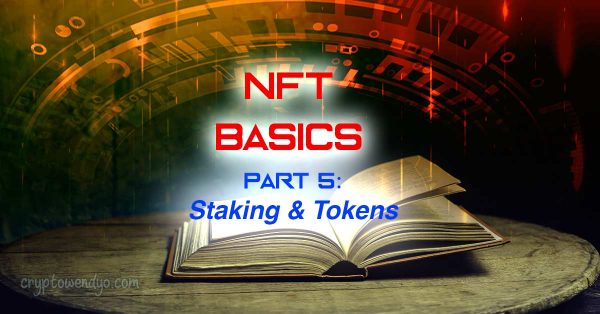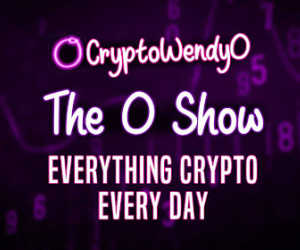What is staking? How can it provide a utility? What incentives users to lock up tokens? This and more as we dive into staking and tokens and how it relates to NFT’s
Did everyone have a safe & happy Eth Merge? I hope so. I told you there was almost definitely probably nothing to worry about, maybe. Glad I nailed that prediction. Anyway, this week we’re going to make a liar out of me by continuing our NFT Basics series almost immediately after I said that it was finished for a while.
Well, these things happen. It occurred to me that we haven’t really discussed the biggest trope in NFTs right now – staking & tokens. I mean, we briefly touched on it when I was discussing NFT pools & bulk purchases using NFT20 well over a year ago in my article on ‘aping’ into NFTs, but we hadn’t really discussed the important stuff.
What’d we miss? Well, ironically, the same thing most projects miss when incorporating a token & staking into their roadmap: utility.
What’s the Use?
Strangely enough, we find ourselves repeating the same cycle and asking the same questions that we asked during the 2017-2018 ICO boom: what is any of this for?
Back then you’d see anyone and everyone launch a token & call themselves a crypto company. You had big accounts shilling them ahead of launch, and then dumping on their followers the second the order books were thick enough for an exit.
The “use-cases” were even more absurd than you see with NFTs, if I’m being honest. At least with NFTs you have the possibility that you like the art enough to want provable ownership & maybe some merch bearing its likeness. Okay. Cool. I guess that’s almost useful?
I remember one project in particular whose entire use, get this, was purchasing aesthetically un-appealing desktop “wallpapers” from their website. They had maybe six. If you don’t remember what “wallpapers” were, it’s because no one gives a crap enough to change them & even if they did that sort of thing has been free since forever.
And who could ever forget Bananacoin? The token tied to an actual banana plantation, with tokens redeemable for…bananas? You thought those ape guys were the first ones to be that absurd? LOL, I wish.
Now, we’re seeing the same thing, as NFT developers try to find a utility with the rapidly shrinking treasuries they have left. The solution? Launch a token; allocate some for future funding, and then dump that the second it finds a market. Oh. Did you think the solution was actual utility?
Probably not.
I’ve seen everything from staking horses to staking strippers to earn tokens to…I dunno, race more horses or wear less clothing? Who knows? Certainly not the dev teams.
I’m not even saying that NFTs need tokens, staking, or utility. They can absolutely just be about the art. The problem is that as teams started charging more for mints, with higher total supplies, suddenly they felt the need to justify a multimillion dollar raise. That isn’t something you can really “improv”, though.
That’s because utility, tokenomics, and all the other important factors that contribute towards a healthy, innovative ecosystem require forethought. It requires a decent understanding of game & cryptoeconomic theories, as well as a general idea of what constitutes a useful good or service. Maybe some creativity. Bare minimum, an actual developer. The fun fact about NFT projects is: most do not have any of those things, least of all a developer.
“What’s my opinion on NFT utility? Buddy…how long you got?”
Ask yourself: how many NFT projects are there? Thousands? So, did we suddenly get a lot more competent developers interested in crypto specifically for jpeggery, or are most of them using freelancers? Probably the second one. Probably overworked, underpaid, half-competent fiverr devs who are copying & pasting code so fast it’d make your head spin.
The real problem is, even if they deliver a great contract for this NFT’s token – who the hell needs or wants it? Usually nobody.
If the token only has benefit for holders of the NFT, then it’s a walled garden – no one outside needs it, save for speculative purposes. It’s essentially useless.
There are alternatives, and there are myriad ways to give tokens actual utility. A previous project I’d covered, Generative Dungeon, used a different method entirely. Their DNG tokens, as far as I’m aware, aren’t even tradable. You accrue them by staking your dungeon, and they can be spent to unlock advanced tools & items for editing & customizing your dungeon’s various levels.

What they also did was add a section for user-created offerings, such as tutoring, developer or artist assistance, etc. – all facilitated by the marketplace & using the otherwise untradeable token. This gives the service providers more tokens they can use for unlocks, free mints, etc. – and it gives the token holders who don’t want the unlocks a few more options on how to ‘spend’ their DNG.
I honestly prefer this method, as it still incentivizes staking, but without the worry of team allocations being dumped on users the moment liquidity is added to a pool. Here, there is no pool. There is just staking & an open exchange of services for a token. The result? Actually, it might have worked too well – GD had to add a disclaimer to their OpenSea page stating that trading activity/volume is low mostly because the vast majority of dungeons are staked.
That’s something else projects need to consider, before approaching tokens & staking. Cryptoeconomic theory is all about economically incentivizing desired actions, and economically disincentivizing undesired actions. It’s all “carrot & stick”, but planned & programmed.
Too little carrot, and you’re just beating the horse until it leaves. Too little stick, and the horse eats all your carrots. Until next time, just try to remember…you’re the horse. So don’t be a jackass.
Author
-

Torrent/seedbox aficionado, decentralist, cultural archivist, fundamental analyst, podcast addict, shitcoin-sifter extraordinaire
View all posts
Tip Jar
BTC: bc1qahxrp47hpguhx8y8r382dekgca34tlv54aufht
Doge: DJRy9gGSUGeyXfVcZXzKLkBv7RmDLv3MhJ














